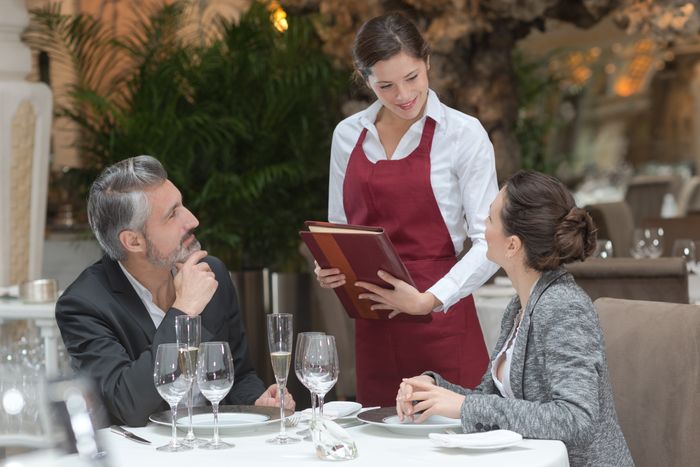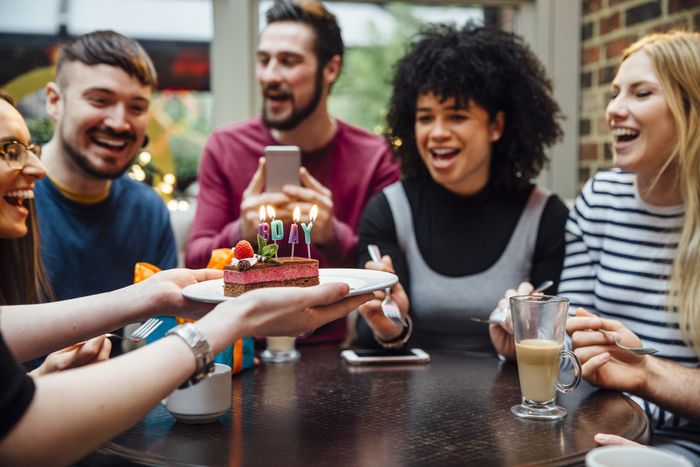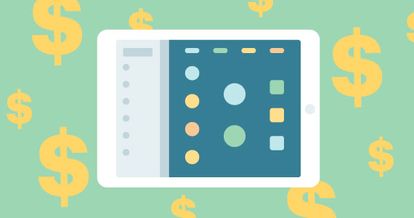Today’s consumers expect custom experiences tailored to their every need. From online shopping to smartphones, changes in technology are changing how the hospitality industry caters to its guests. The latest innovation? Restaurant reservation software with customized guest profiles.
Guest profiles enable restaurants to save information about their guests at the time of booking, so they can deliver personalized experiences for that first visit and every time they return. When guests feel like VIPs, they’re more likely to come back for more.
In this article you’ll learn:
- What customized guest profiles are
- How restaurants can gather information for guest profiles
- How custom profiles can improve the dining experience
With reservation software, you have an opportunity to revamp the customer experience and elevate your restaurant above the competition.

What Are Customized Guest Profiles?
Guest profiles are individual accounts created using reservation software to help restaurants keep track of diner information, behavior, and preferences to provide the best possible dining experience. When restaurants can anticipate requests, they can serve guests better.
Reservation software stores the guest profiles and creates a database of information that restaurants can track and use to make more informed decisions about their business.
So what information can you save in a guest profile?
Guest profiles let you gather contact information (like name, phone number, and email), special dates (like birthdays and anniversaries), dietary restrictions (such as food allergies or sensitivities), and special accommodations or dining preferences (like mobility requirements or a favorite restaurant table).
If you use a reservation software that integrates with your POS like TouchBistro Reservations, your guest profiles will also track what they’ve ordered and how much they’ve spent from every visit to your restaurant. This helps your team spot trends, anticipate “the usual” order, and identify high-value or VIP customers.

Learn how a restaurant reservations system can help your business thrive.
How to Gather Information for Guest Profiles
Data for guest profiles can be collected in two ways: self-reported by the customer or collected through the reservation software system at the restaurant.
When customers make reservations online or over the phone, they can share details like their name, contact information, or special requests with your restaurant. Hosts can also gather information from walk-ins who need to be put on a virtual waitlist. Making use of this time while guests wait helps your restaurant provide better customer service when guests are finally seated.
For example, a host might learn that a guest’s preferred table is a booth. The host will add this to the guest’s profile and use the restaurant’s table management system to assign the guest to the next available booth.
Whenever a guest with an existing profile returns to your restaurant, staff can look them up using the guest’s name or phone number. Not only can staff see the guest’s past orders, but anything the guest orders this time will automatically get added to their profile on the reservation system as well.

Reservations and Building Your Guest Database
When it comes to reservations and creating a database of guest profiles, there are two ways to go about it. You can opt for a reservation-only model, or, you can offer a mix of reservations and walk-in service.
The Reservations-Only Model
If you adopt a reservations-only model, this means that customers must book a table in advance in order to dine in your restaurant – no walk-ins allowed. With this model, you can easily build guest profiles for every diner because each person needs to give their name and contact information in advance.
A Mix of Reservations and Walk-Ins
While the reservations-only model is an easy way to build a database of guest profiles, it may alienate some customers who don’t want to plan ahead for all their meals out. If a reservations-only model is not the right fit for your restaurant, you can instead offer a mix of reservations and walk-in seating.
With this model, identifying guests with existing profiles and collecting new information is simple if the customer has already made a reservation. But how can you add walk-in guests to your customer database or recognize returning guests who don’t have a reservation?
Some reservation software comes with virtual waitlist features. When guests are in close proximity to a restaurant, they can either use their existing profile or create a new profile to add themselves to a virtual waitlist. You can also use standalone waitlist apps such as Waitlist Me and TablesReady.
If you’re not using virtual waitlists, you can simply ask walk-in guests if they’ve dined with you before. If they have, look them up by their name or phone number. If they haven’t, collect all the basic info you need to create a new customer profile (name, phone number, and/or email address) on the spot.
You can also ask walk-in guests to opt-in to a guest profile at the end of their meal by including a signup sheet in the bill fold or providing instructions on how to sign up online. Use this opportunity to also ask guests to opt in to your email and SMS marketing campaigns, but make sure you’re following any data protection and privacy or anti-spam laws for your region (such as GDPR or CASL)
Dealing with Hesitant Guests
Whether you’re asking guests for their contact information ahead of a reservation or when they walk in the door, be prepared for some hesitation. Privacy concerns are a major sticking point for many consumers and even a request for basic personal information will strike some diners as invasive. Be prepared to face questions about what information you’re collecting, how it will be used, how the information will be stored, and whether that data will be sold to third-parties.
If your customers seem hesitant to opt in to your guest profile database, here are some tips on how you can address concerns:
- Be transparent about what you plan on doing with their data to minimize wary guests. Create a disclaimer that explains why you want to know more about them to enhance their dining experience.
- Include information about how you’re following any and all data protection and privacy or anti-spam laws to make sure they stay safe.
- Make sure your front of house staff can explain to guests why you’re asking for this information: that knowing more about guests helps you create a better experience for them.

Compare the top restaurant reservation systems on features, integrations, pricing, and more.
7 Ways to Use Customized Guest Profiles to Improve the Dining Experience
Guest profiles are a game changer when it comes to providing your guests with true hospitality.
Here are seven reasons why:
1. Help guests find the perfect table
With guest profiles, you can save customers’ preferences for tables. If a guest always request a booth or a corner table, you can make a note of their “usual” or “preferred” table in their profile. Simply use your reservation software to place them in the table of their choice – before they ask for it.
You can also use guest profiles to identify high-value customers and give them preferential treatment over walk-ins when there is a wait. If loyal customers visit often and spend a lot, you can make exceptions for them if there are “no tables available” when they walk in.
2. Be aware of dietary restrictions beforehand
Dining out with a dietary restriction can be frustrating, especially if menus aren’t descriptive or servers aren’t knowledgeable. If a customer with a gluten allergy is dining with you, you can make things easier on the customer by saving their dietary restrictions and allergy information to their profile.
If this guest makes a reservation in advance, the server can prepare by reviewing gluten-free options with the chef so they can confidently guide the guest through the menu. Guest profiles make customers with dietary restrictions feel more comfortable and appreciated.
3. Make celebrations extra special
If an anniversary or birthday is saved in a guest profile and a guest makes a reservation around one of those dates, you can ask if the meal is marking a special occasion, or just surprise the guest with a prime seat or complimentary dessert.
Guests will probably forget that they’ve shared this information with you in the past, so they’ll feel extra special when you’re able to celebrate these occasions with them without them having to tell you!

4. Anticipate requests
Guest profiles let you extend your powers of anticipation to things like table, wine, dish, and dessert preferences. When you save these favorites to a guest’s profile, you can guide guests to their favorite table or bring out their favorite wine without being asked. Every special touch enhances the dining experience and keeps guests coming back – they might even leave you a glowing review.
5. Contact guests with special promotions and offers
If your guests have opted into marketing and promotional emails, you can use their contact information to send them special offers. Entice guests with their favorite dessert (on the house) when they come in on a weeknight. Remind guests who you haven’t seen in a while to come back in by sharing your new seasonal menu. For example, if you plan on offering any Valentine’s Day restaurant specials, it can be a great opportunity to attract people to your venue. You can even offer first-time visitors a discount with their second meal and transform them into regulars.
Again, make sure you have permission to contact them for marketing purposes before you send your first email or SMS. If guests share their contact information on your website while making a reservation, add a checkbox to let them opt in to your mailing list. If a host collects information while waiting for a table, ask guests for consent (again, refer to your local privacy laws for exactly what type of consent is required). If you collect guest information with the check, include a disclaimer about what they’re signing up for.

6. Remember past or frequent orders
If you use a reservation software that’s directly integrated with your POS system, your guest profiles will automatically save the guest’s entire order history. This kind of data helps restaurants get a better idea of their diners’ preferences.
For example, customer Ted came in a couple of months ago and ordered Pork Fried Rice, Lemon Chicken, and… something else. But this time when he dines in, Ted can’t remember what that last item was. But he knows he loved it. When Ted’s server looks up his guest profile, they can see Ted’s last order included the signature Crispy Beef and Chinese Broccoli dish. The dish arrives at the table, and Ted is delighted. He’ll definitely be back.
7. Delight regulars
You can use a guest profile to see who your most valuable regulars are. When these VIPs dine at your restaurant, you can reward them for their loyalty with the best table, the most knowledgeable server, a recommended wine pairing, or a special treat – free dessert or a deal just for them! These special touches show guests they’re memorable and valued customers.
When your hosts, servers, and managers can anticipate guests’ needs, they can provide exceptional and memorable service. And using reservation software with guest profiles makes it that much easier to impress guests and keep them coming back. Just make sure you start with the right reservations software for your restaurant by reading this detailed TouchBistro Reservations vs OpenTable review.

Compare the top restaurant reservation systems on features, integrations, pricing, and more.
Free Restaurant Cleaning Checklist
Sign up for our free weekly TouchBistro Newsletter







